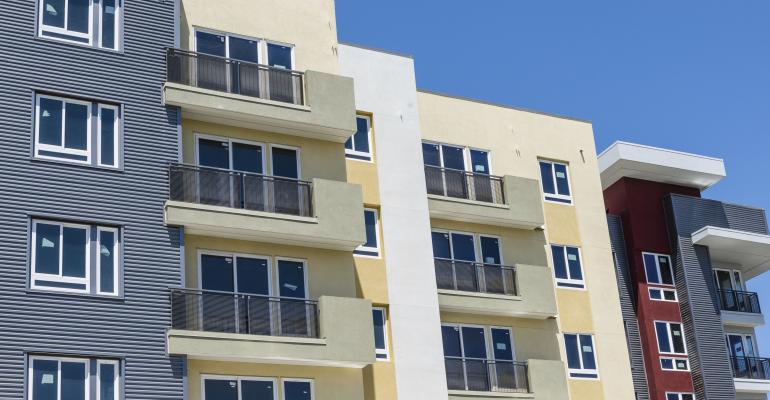After a very slow start to the year, apartment REITs may buy a few more properties as their stock prices recover.
Case in point: Mid-America Apartment Communities just announced its deal to buy Post Properties for nearly $4 billion. The giant acquisition reverses the trend of the past year, when REITs bought fewer apartment properties and many became net sellers.
“We do expect to see a pick up in REIT activity due to the shift in stock pricing,” said Christine Akins, senior managing director of multifamily for CBRE Capital Markets, just before Mid-America announced its acquisition of Post.
REITs bought far fewer apartment properties over the first half of this year compared to earlier in the cycle. That is changing with deals like the Mid-America acquisition—partly because REITs’ stock prices have recovered and their cost of capital has improved, experts say. However, REITs are unlikely to fully return to the buying activity they showed earlier in the cycle, when occupancy rates for apartments were rising and prices for apartment properties were still relatively low.
REIT stepped back
Overall, investors continue to spend a tremendous amount of money on apartment properties. Buyers of all types bought $32.7 billion in apartment properties in the second quarter, up slightly from the same period last year. Over the whole of 2015, a record $153.0 billion in apartment properties traded hands. Institutional buyers and equity funds led the way, according to New York City-based research firm Real Capital Analytics (RCA).
Prices for apartment properties continue to rise relative to the income produced at the properties, driving down yields. Cap rates fell to an average of 5.6 percent in the second quarter, down from 6.0 percent the year before, according to RCA.
However, REITs seemed to have left the buying party for a while.
Purchases by REITs accounted for only 3.45 percent of the volume of apartment properties bought and sold in the second quarter. That’s the lowest share since the third quarter of 2013. Since the Great Recession, REITs have typically accounted for well over 10 percent of apartment properties sold in any given year. REITs have been less active more recently—accounting for only 4.56 percent of apartment asset sales in 2015, according to RCA.
Apartment REITs also continue to sell more properties than they buy. REITs sold $11.2 billion in apartment properties in the first half of the year, compared to just $8.2 billion that they bought.
Stock market recovery for REITs
The prices of apartment REIT stocks have moved sideways for most of this year, after rising quickly for most of 2015. Last year, apartment REIT stock prices rose 16.45 percent, according to the indexes produced by the National Association of Real Estate Investment Trusts (NAREIT). That rising stock price made it easy for apartment REITs to raise money at a low cost of capital, which made it relatively easy for them to buy properties.
This year, however, stock prices for apartment REITs fell 4.95 percent in January, inched back up and then fell down again. Experts continue to worry that apartment developers are building too many new apartments and the percentage of vacant apartments will soon inch towards 5.0 percent.
By April, stock prices for apartment REITs were down 3.48 percent from the beginning of the year. For many REITs, the value of their stock dropped below the net asset value (NAV) of the real estate they own, making it difficult to raise capital.
Since then, vacancy rates and rent growth have been stronger than expected and REIT stock prices recovered again this summer, rising 4.18 percent year-to-date at the end of July. That increase is nice, but it’s not what REITs have become used to.
In recent years, the stock prices of apartment REITs had outperformed the broader NAREIT All Equity REIT index, which includes office, retail and other types of REITs. Last year the apartment REIT index rose 16.45 percent while the broader index rose just 2.83 percent. This year, the All Equity Index rose much more quickly, and was up 18.10 percent year-to-date at the end of July.

